Lactation and milk yield
The onset of lactation is with the birth of the calf. The initial yield is a reliable indicator of the animal’s genetic potential. The highest yield is reached after five to six weeks of lactation and maintained for some weeks. Thereafter the yield decreases until the end of lactation. The lactation ends as the dry period starts.
In buffaloes, the highest milk yield is seen in the fourth lactation where after it declines. The shape of the lactation curve depends on factors such as feed, management, milking frequency, diseases among others. The length of lactation and yield for various breeds is shown in Table 10. The optimum lactation length in the Murrah has been reported to be 262 to 295 days. Factors affecting lactation and milk yield
Lactation and milk yield depend on both genetic and non-genetic factors. The genetic influence is due to species, breed, and individual. Further, it is affected by ability to reproduce, e.g. fertility and thereby calving interval. Improvement on these may be the result of breeding and selection.The non-genetic factors are management, amount and quality of feed and skill of the farmer to detect heat and illnesses. Factors which are outside the farmer’s control such as climate, temperature, humidity etc. also influence lactation and milk yield.
Feeding is the most important factor for increasing and sustaining the milk yield. Sufficient amount of energy, protein, minerals and water must be provided in order to achieve maximum yield. See section on Practical feeding of the lactating buffalo.Calving interval is closely related to lactation length and milk yield. The longer the calving interval, the longer the lactation and the higher the lactation yield. However, total life time yield will be substantially less comparing with a buffalo with short calving intervals.Milking frequency affects both total milk and fat yield. A study using Murrah buffaloes showed that 31% more milk and 26% more butter fat resulted from milking three times per day as compared to twice a day.
Weight of the heifer seems to affect milk yield. Studies on Murrah indicates that the heifers should weigh at least 500 kg at the time of calving in order to reach a maximum milk yield.
Dry period
The buffalo should be dried off approximately 2 to 3 months before expected calving. The dry period is valuable to the buffalo, she may rest and the udder tissue is repaired.In a high yielding herd (above 10 kg per day) the buffalo should be dried off when the daily yield falls below 2.5 kg, even if it is still more than 3 months to expected calving. This goes especially for machine milked herds. An alternative to drying off is to use the buffalo as a foster mother to newly born calves. One buffalo may serve one newborn calf or two older calves which receive additional feed. Care should be taken to dry her off completely no later than 2 months before calving.
In herds which are hand milked and where the yield is low, it is difficult to set a lower limit in kg. Instead, the 2 months limit is recommended.
Table 1: Macro and micro elements (ppm) in buffalo milk
| Macro and micro elements |
| Sodium | 750 | 317 |
| Potassium | 1390 | 908 |
| Calcium | 2030 | 1880 |
| Magnesium | 200 | 91.9 |
| Iron | - | 0.325 |
| Phosphorus | 1290 | - |
| Zinc | - | 6.26 |
| Copper | - | 0.303 |
Composition of colostrums
During approximately the first three days of lactation the buffalo secretes colostrums. Colostrums is vital for the newborn calf and its composition reflects the calf’s need (see Table 2). Colostrums contains the important proteins; the immuno globulins, which are the newborn calf’s source of antibodies. The content of iron and copper is markedly higher in the colostrums as compared to normal milk.
Table 2: Composition of colostrums
| Water (%) | Fat (%) | Total Protein (%) | Lactose (%) | Vitamin A (µg/kg) |
| 68 | 15 | 13.6 | 3.1 | - |
| 73 | 9.55 | 9.59 | 7.54 | 1.8 |
Alterations of milk composition
Milk composition can be altered both before and after the milking. If the change occurs inside the udder it is mostly due to a disease or treatment of the disease by antibiotics or other type of medication. Feeding can alter the normal composition, however, these changes are seldom extreme, but within normal intervals. Season can effect the normal milk composition, although these changes are mostly due to differences in feeding during different seasons.
Feedstuff
Rule of thumb is that roughage increases fat content in milk, whereas concentrate depresses it. This depends on the differences in VFA production in the rumen from the different carbohydrate sources. Digestion of fiber results in a higher proportion of acetic acid and thereby more milk fat. Digestion of concentrate on the other hand, results in a higher proportion of propionic acid which is unfavorable for milk fat synthesis. If too much concentrate is given, fat depression might occur. Higher energy diets seem to give better coagulation properties of the milk. Long-chain fatty acids increase when the energy concentration in feed is low.
Glucosinolates in Brassica spp. are hydrolyzed by the ruminal microbes into thiocyanates, iso- thiocyanates and some other products. Thiocyanate is then excreted in the milk. High feeding levels with Brassica spp. may therefore lead to unsatisfactory levels of thiocyanate in the milk. Thiocyanate may cause thyroid enlargement in animals as well as humans ingesting it. A common feed stuff of Brassica spp. is mustard fodder and mustard oil cake. Even 15 days after withdrawal of mustard feed, circulatory high levels of thiocyanate exists and is secreted in milk.
Disease and medication
Mastitis changes the milk composition dramatically. The alterations can sometimes be used as detection of the disease. If antibiotics are used in order to cure for example mastitis, these will be excreted in the milk. Controlling of external parasites with e.g. diazinon affects milk yield as well as composition. The chemical is detected in the milk upto 48 hours after dermal application.
Milking the buffaloBuffaloes have been used for milk production for centuries. They have not been subjected to the same upgrading and breeding like cattle of the western world. However, the buffalo is an excellent milk producer, given the correct circumstances. Milking the buffalo is not a difficult task. One should, however, take care not to implement cattle milking techniques directly on the buffalo cow. As described below, the anatomy and physiology of the buffalo udder differs slightly from the bovine one. This has further implications on the milking technique as mentioned later. | 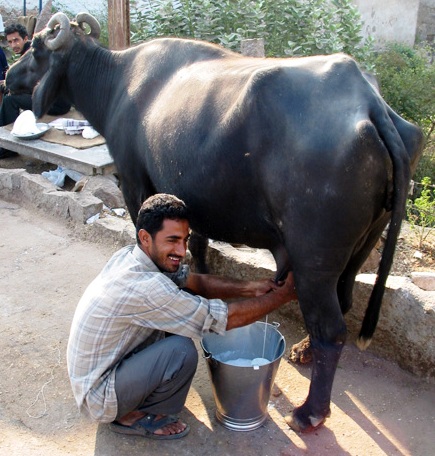 |
Anatomy and physiology of the buffalo udder and teat
The buffalo has an udder similar to the cattle in the gross anatomy. The buffalo has four teats. Extra teats can be found in the similar way as in cattle. The teats vary in shape and size. Generally, they are larger than cattle teats. According to several studies, cylindrical forms of the teats are most common in the Murrah breed. The front teats are, on average, 5.8 cm to 6.4 cm long and their diameter is approximately 2.5 cm to 2.6 cm. Respective figures for the hind teats are 6.9 cm to 7.8 cm and 2.6 to 2.8 cm.
The hind quarters of the udder are slightly larger than the front ones and contain more milk. The approximate ratio is 60:40 (hind: front), as for cattle. It takes a longer time to milk the hind quarters.
The anatomy of buffalo teats is slightly different from cattle teats. The epithelium of the streak canal is thicker and more compact in buffaloes than in cattle. The sphincter muscle around the streak canal is thicker in buffaloes than in cattle. More force is therefore required to open the streak canal. The teat sphincter tonus has been reported to be at least 400 mmHg negative pressures in buffaloes (the tension falls some what after calf suckling and hand milking). This is the cause of buffaloes being”hard milkers”.
In cattle, the milk is synthesized in the alveoli and is periodically transferred to the large ducts and cisterns of the mammary gland and the teat (see booklet on Efficient Milking). This is not the case in the buffalo, instead, the milk is held in the upper, glandular part of the udder, in the alveoli and small ducts. Between two milking there is no milk stored in the cistern. Hence, buffaloes have no cisternal milk fraction. The milk is expelled to the cistern only during actual milk ejection. The same phenomenon is seen in Chinese Yellow cows and Yaks.
Because of the absence of cistern milk between milking, in the teat cisterns, the teats are collapsed and soft before let down. This is contradictory to the bovine cow, where the teats can be very hard and firm due to the presence of milk in the teat cistern.
Physiology of milking
For a comparison with cattle see booklet on Efficient Milking. Buffaloes are said to be slow and hard milkers because of their slow milk ejection reflex and their hard teat muscle sphincter. The milk ejection reflex appears to be inherited to some extent but it is also a product of the environment. In buffaloes, the let down time averages 2 minutes but may be as long as 10 minutes. The reasons for this are not fully understood.
One reason for the longer let down time of milk for buffaloes is probably the different anatomy of the udder as compared to the dairy cow. In the buffalo, the udder cistern is absent or has a very small volume and therefore there is little or no cisternal milk available. This furthermore leads to no intra-mammary pressure in the cistern which would otherwise help the milk flow. In cattle, the milk is already stored in the large cistern, and milk is available for extraction immediately after preparation. The high intra-mammary pressure contributes in pressing out the milk.
The intra-mammary pressure increases at the onset of milking. It is highest during the peak flow and decreases there after to zero at the end of milking. The pressure is higher in buffaloes during milking than in cattle. The intra-mammary pressure varies between individuals and milkings. Its’ level is not always indicative of a high milk production.
Let down time seems to be negatively correlated to milk yield. Let down time is shorter in early and middle stage of lactation as compared to in late lactation. A faster flow of milk is observed when the yield is higher. If buffaloes are carefully selected for yield and ease to milk, improvement in these characteristics is possible.
Top
Induction of milk let down
Physical stimulation of the teats, either by the calf’s suckling or the milkers hands, excite receptors from which nerve impulses are sending to the posterior pituitary gland causing secretion of the hormone oxytocin. The hormone is transported via the blood to the mammary gland. Because both hormones and nerve impulses are involved in the milk ejection reflex, it is called a neurohormonal reflex. Oxytocin stimulates the contraction of the alveoli and small ducts thereby emptying the milk into the larger ducts and the cistern. Hereafter the milk can be evacuated from the udder. See booklet on Efficient Milking.
The contraction of the alveoli may, to some extent, be enhanced by tactile stimuli of the udder (massaging, squeezing) the so called tap reflex. When calves suckle, they butt at the udder in order increase milk secretion. Manual massage of the udder during milking imitates this reflex.
Like cattle, buffaloes can get used to different stimuli. It is clear that also in buffaloes, oxytocin release is triggered by visual or audible stimuli, such as the sight of the milker, the noise of the vacuum pump or when entering the milking parlour. The animal becomes conditioned to let-down milk and has thus developed a conditioned reflex. (An unconditioned reflex is the suckling of the calf.) By letting the animals get accustomed to a strict routine, time of let-down is shortened. In cattle, it has been demonstrated that feeding concentrate during milking improves time of let-down. It has yet to be shown in buffaloes.
Inhibition of milk let down
Buffaloes are sensitive to changes in the environment. They may withhold the milk if they are uncomfortable with the situation. If the animals are stressed, scared or in pain, the hormone adrenaline is secreted. This hormone causes constriction of the blood vessels, thereby hindering the supply of sufficient amount of oxytocin to the udder. Adrenaline also directly acts on the myoepithelial cells in the alveoli by blocking the oxytocin receptors. The inhibition if milk let-down will result in the leaving of milk in the secretory parts of the udder. Continuos exposure of stress to the buffaloes will affect the milk production negatively. Change of milker or milking routine, application of wrong milking technique or milking machines in bad conditions are some reasons for the buffaloes to with hold the milk.
Evacuation of the milk
The actual milking can begin after the let down reflex has been elicited. Whether this is done by hand or machine it is important to use proper routines. The milking should be done as fast as possible without causing stress or pain. The milking should be as complete as possible without excessive stripping. Elevated residual milk in the secretory part of the udder decreases milk secretion and thereby influences the milk yield negatively.
Keeping good hygiene
Simple guidelines for keeping good hygiene in the barn or milking parlor:
Dung should be removed both prior to and during milking in order to minimize exposure of the milking equipment to dirt. If the equipment for some reason becomes dirty, it must be cleaned properly before using it again.
- Hands should be clean when milking or handling the milk. Clothes should be clean.
- Use one udder-towel per buffalo, discharge towels in a separate bucket after usage.
- Post-dipping of teats should always be done.
- All containers with milk should have a lid on at all times.
- Milk should not be stored near the dung or feeding place. There are several reasons for this; 1) milk is sensitive to odors and may ”pickup” dung or feed odors. 2) Bacteria from dung or feed are more easily transferred to the milk if it is stored nearby. 3) Particles from the dung heap or the feed may contaminate the milk.
- It should not be possible for animals such as dogs, cats and rats to approach the containers.
Top
Pre-milking
Pre-milking is defined as actions to induce milk let-down by cleaning the udder and pre-milk in a strip cup. Cleaning the udder should be done with a lubricated towel (washable textile or disposable paper). Separate towels should be used for each buffalo. The udder should never be splashed with water.
Pre-milking is necessary for various reasons; the most important being preparing the buffalo for actual milking and checking for mastitis or other infections. Pre-milking must be done in a strip cup, never on the floor! The purpose of using a strip cup is to be able to easily observe changes in the milk. Furthermore, the spreading of pathogenic bacteria is limited. Pre-milking is done with dry hands and the full hand method. The hands should be cleaned between buffaloes during the milking, if necessary.
After milking
After milking the teats should be disinfected. This reduces, if not completely inhibits, bacterial growth on the teats. The teat canal stays open for a while after milking is completed, thus eliminating the important protection against entry of bacteria. The dip solution will both act as a physical hindrance for bacteria and as a disinfectant. Preferably the teat-dipping-solution should contain some lubricant in order to maintain teat condition and to prevent chapping and sores.
Because the teat canal is open after milking, sometimes for as long as half an hour, the buffaloes should be prevented from lying down. This can be done by giving enough feed to last for a long time after milking.
Special detergents for cleaning of the milking equipment is available and should be used correctly. All buckets, containers and machines used for milking must be cleaned both outwards and inwards immediately after usage.
The towels used for cleaning and drying of the udder should be cleaned properly after each milking. They can be stored in a bucket with a lid and clean water containing chloride until the next milking.
Milking routine
An appropriate milking routine is important for hygienic and production reasons as well as for creating a comfortable and smooth environment for animals and milkers. It is easier to maintain a good hygiene and to facilitate the adoption by the buffaloes to relief milkers if a consistent milking routine is applied. In dairy cows it has been demonstrated that the practicing of a strict milking routine results in increased milk production.
The routine mentioned below can be followed by both hand and machine milkers in tie-stall barns and where milking are carried out in flat barns. In the case of hand milking in such barns, points 6 to 9 are omitted. Routine check of the milking machine should be done before each milking session according to the manufacturer’s recommendation.
- Start by tying (if not already tied) and feeding the buffaloes.
- Remove dung from the floor.
- Wash hands with soap and dry them.
- Clean the teats with special towels and massage them thoroughly.
- Foremilk the buffalo by hand in a strip cup, checking the appearance of the milk.
- Apply the cluster gently. Check tube alignment.
- Check the buffalo every now and then to make sure that she is comfortable with the machine.
- Palpate the udder to check that it feels empty.
- Remove the cluster gently.
- Dip the teats in a suitable disinfectant solution.
- Clean all the equipment in the milking room.
When machine milking, it is important that the milking machine is nearby and ready to be applied to the udder at the right time (after pre-milking). Thus, each buffalo must be cleaned, massaged and pre-milked and then have the machine applied directly. It must be emphasized that it is not possible to clean all the buffaloes first and then apply the machines to the first buffaloes. The oxytoxcin release has a short duration (a few minutes). If the machine does not start milking after this time, a whole new procedure must start after half an hour.
Top
Hand milking
Pre-milking routines are as important when milking buffaloes as when milking cows. For a complete review see Efficient Milking. It is important to use a smooth and comfortable milking technique. The ”knuckling” or ”stripping” method is used in the wrong belief that it is necessary in order to overcome the resistance in the teat sphincter. These milking methods might cause elongation and damage to the teats. A much more comfortable and appropriate method is the”fullhand” technique.
Machines for milking buffaloes
Since the udder and teats in buffaloes are different compared to cattle, milking machines for cattle have to be modified in order to fit buffaloes. In general, a heavier cluster, a higher operation vacuum and a faster pulsation rate is required. Results from recent studies in India indicate that it might be possible to reduce the cluster weight and the frequency of liner slip by applying an appropriate combination of liner design and cluster weight.
It is not only the total weight of the cluster that is important, but also the distribution of its weight on the udder. Unequal weight distribution can cause uneven milk output. The long milk and vacuum tubes should be aligned and stretched to ensure equal weight distribution of the cluster on the udder.
Milking characteristics depend upon vacuum levels and pulsation rates among others. Studies on Egyptian buffaloes revealed that a vacuum of 51 kPa and a pulsation rate of 55 cycles/min led to much longer milking times than a vacuum of 60 kPa and a pulsation rate of 65 cycles/min (6.21 min. compared to 3.18 min.). The higher vacuum level, however, caused a significant increase in the somatic cell counts. Highest milk yield within an acceptable time were found when using 56 kPa and 65 cycles /min. In all trials a pulsation ratio of 50:50 was used. Studies in Pakistan indicated that the pulsation rate and ration should be 70 cycles/min and 65:35 respectively for Nili-Ravi buffaloes.
In Italy, the majority of farms use the same machines for both buffaloes and cattle. It is a simple ”cattle machine” with one vacuum level operating at approximately 40 cm Hg. In India, recent trials have been made with milking with Duovac TM from Alfa Laval Agri. Successful milking was done with a vacuum level of 55 kPa, 70 cycles/min pulsation rate and pulsation ratio of 65:35 for milk flows above 0.2 kg/min. For milk flows under 0.2 kg/min the respective data where 38 kPa, 48 cycles/min and the same pulsation ratio. The Duovac TM is physiologically correct for the animal since it helps in gently stimulating let-down and is also gentler to the teats after the peak flow.
Milking with machines
In order to obtain all the advantages with machine milking the correct technique must be used. The milkers and buffaloes must be familiar with the machines. If the buffaloes are scared or feel uncomfortable they will withhold the milk and thereby yield less. This in turn will lead to economic loss for the farmer and eventually he will loose his faith in machine milking.
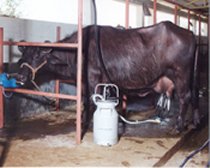
Top
Introducing machine milking
The concept of machine milking should be introduced slowly and by persons who the buffaloes are used to and feel comfortable with under the supervision of an expert from Alfa Laval Algri.
The procedure of introducing buffaloes to machine milking presented below an recommended by Alfa Laval Agri is applicable for a whole herd where neither animals nor humans are familiar with machine milking. By carefully following the mentioned steps, a successful introduction should be possible.
- Training of personnel. Training of milkers should be done by a person from the milking machine company. This person has good knowledge about biology of milking, machine milking as well as with the design, function and maintenance of the milking equipment. The training should include introduction procedures, milking routine, handling of the machine, cleaning and maintenance as well as certain aspects of the day-to-day service of the machine.
- Installation of the milking machine in the barn and any other modification in the barn should be made well in advance of the changing to machine milking.
- It is most appropriate to start with heifers since it is easier to habituate heifers than older buffaloes to machine milking. Older buffaloes may have been hand milked by a certain routine for several lactations and may respond negatively to a change in routine. Heifers on the other hand are not accustomed to any specific routine and are more likely to accept machine milking as well as hand milking. Furthermore their udders and teats are more uniform and not damaged by previous milking. Liner slip and other negative effects of machine milking is therefore less pronounced in heifers. Note that heifers should not be hand milked but directly introduced to the machine. They may get accustomed to the noise of the vacuum pump etc. by participating in the milking routines prior to partus.
- Calm animals that are comfortable with hand milking should be selected. The udders and teats of the animals should be uniform with respect to conformation and size. Buffaloes in heat or unhealthy animals or animals with previous let-down-problems should not be selected.
- Milk the old and selected animals as usual by hand but let the vacuum pump run during milking. This will make the animals accustomed to the noise. Put the pump on before actual milking, but after the buffaloes have been tied up, otherwise the animals may be startled by the sudden noise. Repeat the procedure (usually 2 to 4 times) until all buffaloes are accustomed to the noise. It is better to repeat this procedure once or twice more until all buffaloes are comfortable, than rushing into the next step.
- Bring the milking machines into the barn. Connect them to the airline and place them at each buffalo’s place at the same time as hand milking is carried out. This will allow the buffaloes to get used to the ”ticking” sound of the pulsator. It will give them a chance to look at the machines and smell them and may be even taste them. Make sure though, that they do not chew on them! Move the machines to the next buffalo in order to milked. This makes the buffaloes used to machines being moved around. The procedure should be repeated (usually 2 to 4 times) until all the animals have accepted the presence of the machines.
At this stage, presumably all buffaloes will be well accustomed to the new routine. If some buffaloes are still showing signs of nervousness or stress, it is recommended to repeat the above mentioned steps until the animals are calm. Buffaloes that after this procedure have not accepted being milked by machines should be returned to hand milking. One or two frightened or uncomfortable buffaloes might cause major disturbances in the whole herd.
Consistency with respect to milking routine including pre-milking preparation should be applied from the beginning of the introduction period. The regular milker should carry out the machine milking during the introduction period.
When the cluster is firmly attached to the udder, the milker should stay with the buffalo to see that she is comfortable. Soft talking and brushing and scratching are the best ways to calm an animal. These first sessions of machine milking usually require longer time than the following. However, this time is well worth spending to assure forward calm and easy-milking buffaloes
.jpg)
.jpg)
.jpg)

.jpg)
.jpg)
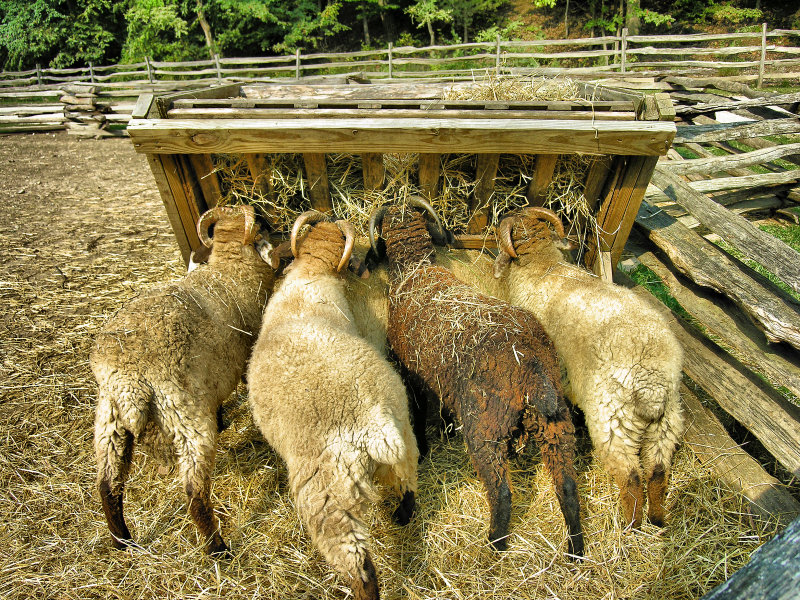
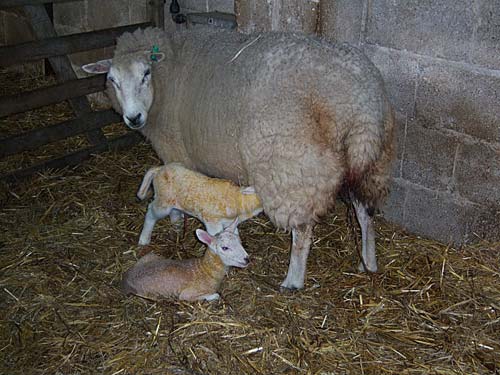


.jpg)
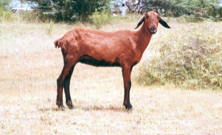
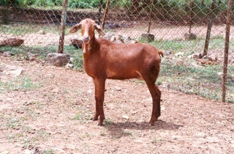
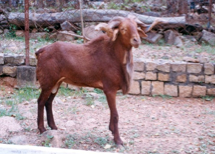
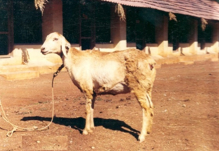

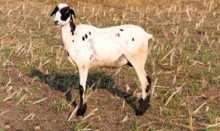
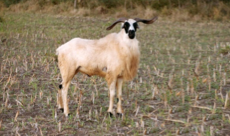
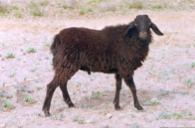



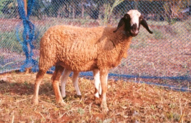
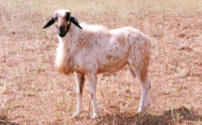
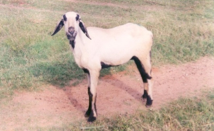

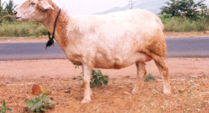
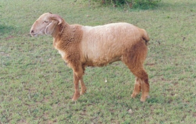

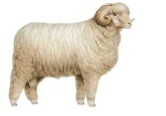

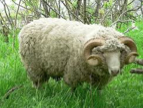



.jpg)
.jpg)
.jpg)